Iguazu National Park
By Paul Cosgrave
What is Iguazu National Park?
Iguazú National Park (Spanish: Parque Nacional Iguazú) is an Argentine National Park that borders its sister World Heritage site, Iguaçu National Park in Brazil. The park encompasses 261 square miles (677 sq km) and creates an impressive subtropical rainforest.
While many people go to the park to hike through the rainforest, the park is primarily known for its most famous attraction, Iguazú Falls. Iguazú Falls is one of the New Seven Wonders of Nature and is considered one of the world’s largest and most beautiful waterfall systems.
Disclosure: This article contains affiliate links. Making a purchase through an affiliate link will mean a small commission for this website. This will not affect your price. Privacy policy.
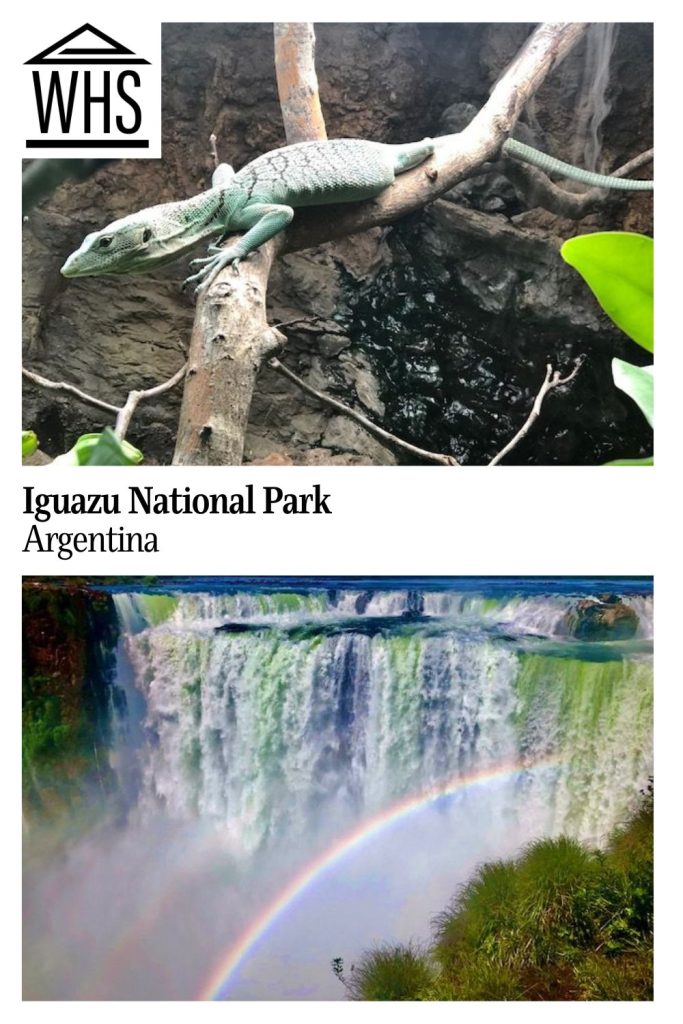
The waterfall boasts 275 individual waterfalls, creating a natural border between Argentina and Brazil. The falls are taller than Niagara Falls in North America and slightly smaller than Victoria Falls on the Zambia/Zimbabwe border. However, Iguazú Falls is more expansive than both, with the previously-mentioned 275 individual waterfall drops versus four and five drops for the other two famous waterfalls. It’s a popular legend that Eleanor Roosevelt, upon seeing Iguazu Falls, exclaimed, “Poor Niagara!”
Why is Iguazú National Park a UNESCO World Heritage site?
In 1984, UNESCO declared Iguazú National Park a World Heritage site. According to UNESCO, the park is listed as a World Heritage site for two reasons:
- The natural beauty that is associated with Iguazú Falls, one of the most magnificent waterfalls in the world: “The permanent spray from the cataracts forms impressive clouds that soak the forested islands and river banks resulting in a visually stunning and constantly changing interface between land and water.”
- Its biodiversity due to the large sub-tropical forest within this national park combined with the adjacent Iguaçu National Park in Brazil and other protected areas. Together, they form “the largest single protected remnant of the Paranaense subtropical rainforest.” The forest is home to many animals, including several endangered or vulnerable species.
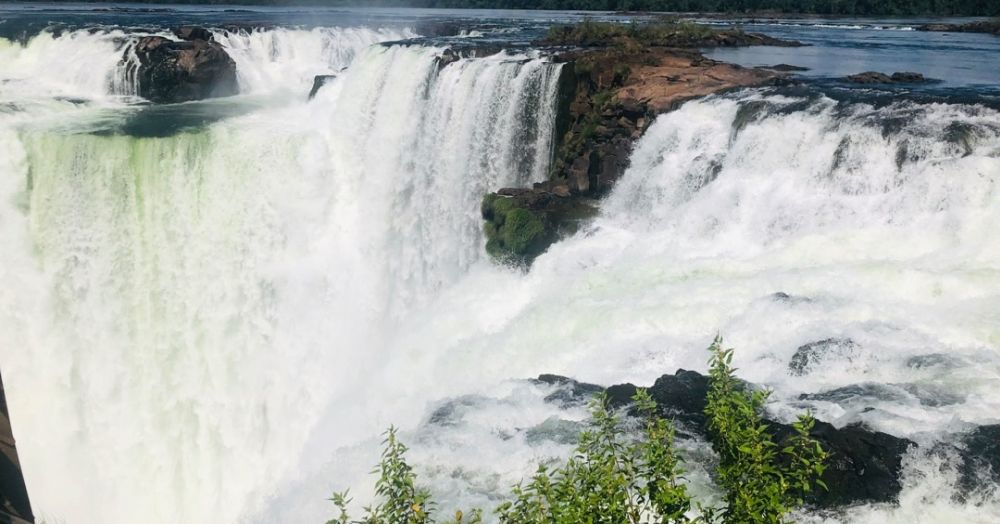
What can you expect on a visit to Iguazu National Park?
The pure scenic beauty of the park and the waterfalls will impress you on your first visit to either the Argentine or Brazilian side of the border.
The Devil’s Throat Trail is our favorite walk in Iguazú National Park on the Argentine side. The Devil’s Throat trail starts with a train ride from the park entrance area up above the falls. Once the train arrives, visitors take a variegated iron walkway across the top of the river to a lookout station. From there, you’ll see views directly over Devil’s Throat and down into the canyon. The walk is approximately 1100 meters (3600 feet) long. The entire trail will take about two hours.
The waterfalls are so majestic and powerful that you will likely see a rainbow in the canyon below the Devil’s Throat.
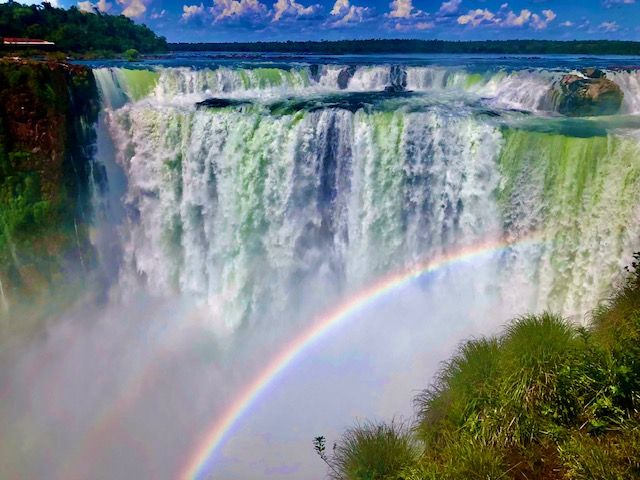
Other trails in the park are also interesting to walk. One trail bypasses the train on the way to the Devil’s Throat. Other trails go to different areas of the park, providing different views. One of the other trails requires some additional climbing.
As you walk on any of the trails, you are likely to see some wildlife. We saw birds, monkeys, and lizards, but what really impressed us were the swarms of butterflies that had gathered along the trails.
If you didn’t get wet enough from the mist at the Devil’s Throat viewing platform, then you can also go on a boat ride that will take you up close to the waterfalls. You will be issued a poncho that at least helps you stay a little dry. The day I was there it was extremely hot and muggy, so I would have enjoyed the boat ride. Unfortunately, I just didn’t have enough time to do it.
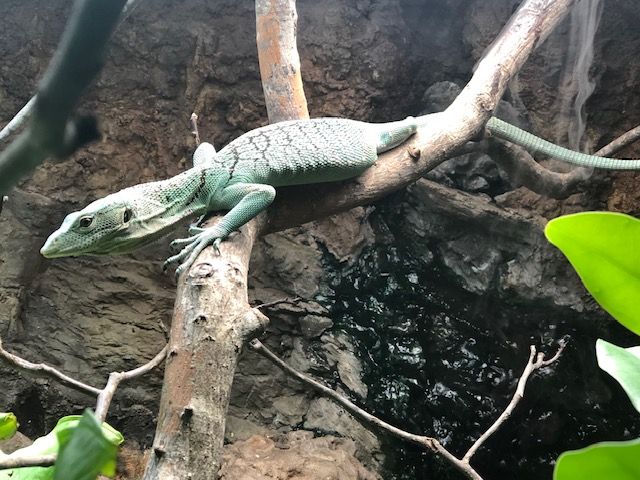
Is Iguazu National Park worth visiting?
With its breathtaking waterfalls, scenic walkways, and sub-tropical rainforest, the park is worth a visit. The grandeur of the 275 individual waterfalls is something you cannot experience anywhere else. If you enjoy being in nature, you will fall in love with this place. Plan to spend at least one full day exploring the national park. This can include the boat ride. Then, if you have time, allocate a second day to visit the Iguaçu National Park in Brazil. The Brazil side offers a broader, more panoramic view of the falls.
What sorts of travelers would like Iguazu?
People of all kinds will find the park a great place to visit. With almost two million visitors coming to the park each year, it appeals to a broad spectrum of people. During my two visits, I saw families with young children, couples like us, locals, and people from all over the world. My only caution is that there is a fair amount of walking to see the falls, so if you have a mobility challenge, it may not be as enjoyable. I believe they have some accommodation, but still, it can be limiting.
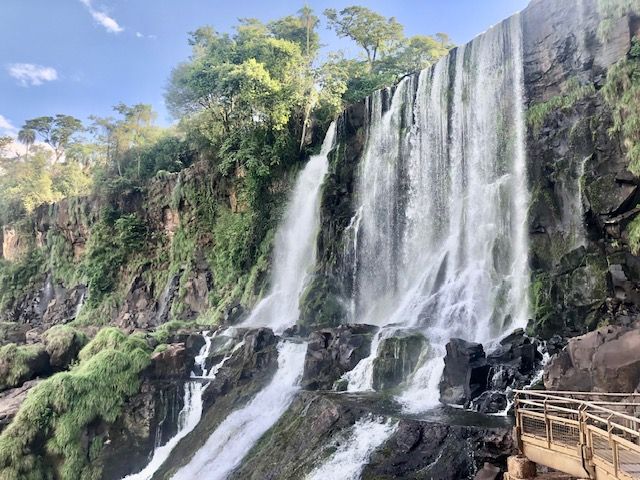
Tips for visiting Iguazu National Park
I have visited the falls twice, both times in late February. The first time was back in the 1980s. I flew from Rio de Janeiro on that trip and stayed on the Brazilian side. I stayed for two days and visited the Argentinian side as well as the Brazilian side. 80% of the falls are in Argentina. Surprisingly, this means you get a broader view of the falls from the Brazilian side, looking towards Argentina. But in Argentina, you get closer to the falls, and there are more of the falls to explore.
On the second visit in 2023, we did a round-trip day tour from Buenos Aires. A GetYourGuide tour guide met us at the airport when we arrived late morning. We spent the afternoon with her, touring the falls from the Argentinian side. She dropped us off at the airport to return to Buenos Aires that evening. If we had wanted to visit the Brazil side, we would have had to make it a two-day trip as the border crossing can get somewhat crowded and take a little more time.
Nevertheless, this well-rated one-day tour includes both sides of the falls. It includes hotel pickup in either Foz do Iguacu in Brazil or Puerto Iguazu in Argentina.
For a more relaxed time, take this two-day tour, which also includes hotel pickup and drop-off on both days on either side.
If you only have time to visit one side of the falls, and you wish to get up close to the falls and even get a little wet from the mist, then Iguazú National Park in Argentina is your best choice. If, instead, you are more interested in viewing the overall panoramic expanse of the falls, then Iguaçu National Park in Brazil is likely a better place for you to experience it.
Wear comfortable shoes. The walking trails are well-maintained, but you will need to walk a fair amount to reach the main viewpoints. The falls are in a subtropical climate, so we recommend wearing light, breathable clothing. If you don’t want to get wet from the mist of the falls, bring a waterproof poncho.
When is the best time to visit Iguazú Falls?
You can visit Iguazú Falls all year round. However, to avoid the discomfort of the rainy season (December to February) and the dwindling water flow of the dry season (June – August), it is best to visit the falls between August and October or between March and April.
Since I was there in late February on both trips, I visited in the muggy, rainy season – not the best time to visit. While it may have been because of the forty-year time difference between the two trips, the second trip was not as enjoyable as the first. Not because of the duration of the visit, but because of the very high temperature and humidity which made the second visit somewhat unpleasant. Therefore, if we were to do the trip again, we would follow the recommended best travel times stated above and visit in the March-April timeframe.
Due to the park’s popularity, it can get very crowded. It’s better to visit during weekdays or early in the morning.
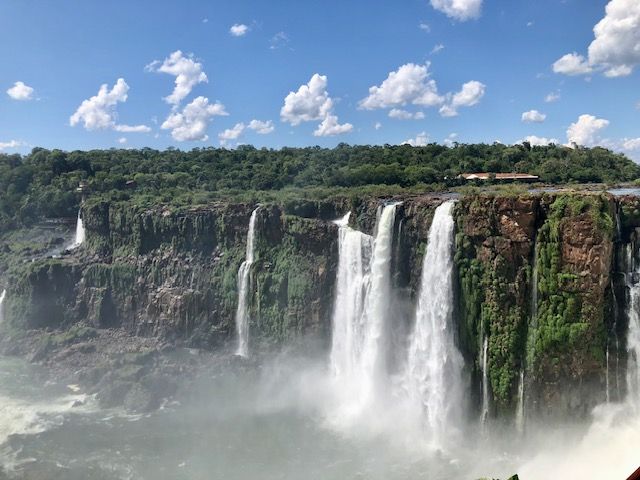
Where is Iguazú National Park?
Iguazu National Park is in Puerto Iguazu, in the Misiones province of Argentina along the Iguazú River. Iguazú Falls is 18 km (11 mi) from Puerto Iguazu in Argentina, and 29 km (18 mi) from the town of Foz do Iguaçu in Brazil.
Book accommodations in Puerto Iguazu, Argentina, or Foz do Iguaçu in Brazil.
Getting to Iguazú Falls can be a challenge. Iguazú Falls is located approximately 1,200 kilometers (745 miles) northeast of Buenos Aires. If you have a car, you can drive there. If you are on a tight budget, there’s a bus service that can get you there. However, for most people, you will likely want to do what we did and that is fly there. From Buenos Aires, you can fly to the Aeropuerto Internacional de Puerto Iguazu (IGR). The flight takes approximately 1 hour and 50 minutes. This compares to approximately 15 hours driving time and 20 hours by bus. There are also flights to Puerto Iguazu from many other places in Argentina.
Unless you book a tour with a pickup at the airport, you can take a bus from the airport to Iguazú National Park, but it’s not a direct route. Here’s how you can do it:
- From Iguazu Airport (IGR): Take a bus to the Terminal de Ómnibus de Puerto Iguazú and connect to a second bus. This entire journey takes about 2 hours to traverse the 18 km (11 mi).
- From Puerto Iguazú: Catch a direct bus to Iguazu Falls. Buses depart every 30 minutes, and the trip lasts around 40 minutes.
Alternatively, you can take a taxi directly from the airport to the falls, which is faster and takes about 16 minutes.
This full-day tour of the Argentinian side starts at the visitors center or includes pickup from hotels in Foz do Iguassu, Brazil, if needed. Or try this full-day tour of the Argentinian side, which includes pick up from hotels in Puerto Iguazu.
If, instead, you plan to come from Rio de Janeiro or Sao Paulo in Brazil, you will arrive at the local airport called Aeropuerto Internacional de Foz do Iguaçu (IGU). Flights from Rio take 2 hours approximately. From Sao Paulo, the flight takes 1:45 mins.
I don’t recommend using Iguazú as a layover as part of a visit to both countries Instead, I recommend roundtrips from Argentina or Brazil because one-way flights from one country and back to the other will be more expensive. They will involve different airlines as well as the different transfer airports in two different countries. That means several border crossings and numerous passport checks.
For more information about Iguazu National Park, its opening hours, and admission fees, see its official website.
Have you been to Iguazu National Park? If so, do you have any additional information or advice about this UNESCO World Heritage site? Please add your comments below!


